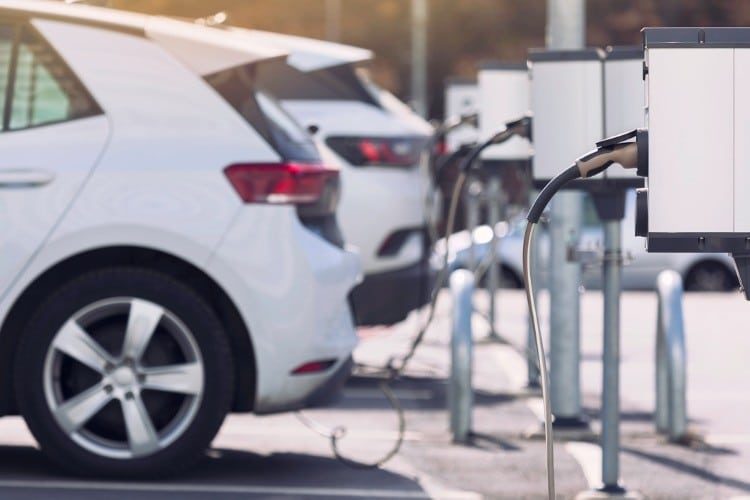
National Transportation Safety Board (NTSB) Chair Jennifer Homendy shared her concern about the safety risks that heavy electric vehicles pose if they collide with lighter vehicles during her keynote speech Wednesday, at the Transportation Research Board annual meeting in Washington, D.C.
Homendy reminded the transportation leaders in attendance why they do what they do, in pep rally style, declaring, “We’re fighting for the 43,000 people who die on our roads annually … and the millions more who are injured — not just drivers, but all road users…. No matter their race, ethnicity, ability, income, or where they live. No matter whether they’re walking, biking, rolling, or driving. That is who the NTSB is fighting for; who we’re all fighting for.”
Homendy considered talking about “safety recommendations, from mandating SMS — safety management systems — to improving fishing vessel safety, to requiring collision avoidance and V2X in all vehicles, to protecting all road users through a Safe System Approach — all of which are on our Most Wanted List.” But the target of the day’s speech became clear as she questioned the safety impact of electric vehicles (EVs) on our nation’s roads.
“I’m concerned about the increased risk of severe injury and death for all road users from heavier curb weights and increasing size, power, and performance of vehicles on our roads, including electric vehicles,” Homendy said.
“A GMC Hummer EV weighs over 9,000 pounds, up from about 6,000 pounds. Its gross vehicle weight rating is a staggering 10,550 pounds. The battery pack alone weighs over 2,900 pounds — about the weight of a Honda Civic. The Ford F-150 Lightning is between 2,000 and 3,000 pounds heavier than the non-electric version. The Mustang Mach-E, Volvo XC40 EV, and RAV4 EV are all roughly 33% heavier. That has a significant impact on safety for all road users.”
In the 1970’s, automakers began producing lighter vehicles to increase the fuel economy of cars and light trucks and to adhere to newly enacted Corporate Average Fuel Economy (CAFE) Standards. The auto industry was also advancing new designs to vehicles, adding crumple zones, or areas of a vehicle designed to deform and crumple in a collision. This absorbs some of the energy of the impact, preventing it from being transmitted to the occupants. But with the introduction of EVs and the weight disparity between EVs and non-EVs, will these crumple zones be enough to protect passengers?
It appears that our government’s enthusiasm for going “green” and demanding net-zero CO2 emissions by 2050 is putting American citizens’ lives at greater risk, all in the name of limiting the effects of climate change. The massive weight disparities between EVs and their combustion-engine cousins should be an area of concern when designing all vehicles.
Holding true to Biden’s energy polices, Homendy stated to the meeting attendees, “Now I want to be clear: I’m inspired by the Administration’s commitment to phasing out carbon emissions. We do have a climate crisis that needs to be addressed. The U.S. transportation sector accounts for the largest portion of U.S. greenhouse gas emissions, and I firmly believe it is a human right to breathe clean air.”
“But we have to be careful that we aren’t also creating unintended consequences: more death on our roads. Safety, especially when it comes to new transportation policies and new technologies, cannot be overlooked. Ever,” she continued.
The good news is that with only two percent of Americans owning EVs, there is time to design all vehicles to withstand more forceful impacts during a collision. But time is running out, as the number of EVs on U.S. roads is reportedly expected to increase to 26.4 million by 2030, up from the previous prediction of 18.7 million. The increase in EVs is being driven by government mandates to reduce the number new gas-powered vehicles being manufactured and sold, including California’s plan to achieve 100-percent zero-emission vehicle sales by 2035.
The NTSB is aware of the safety issues EVs bring to our roadways. But the agency only investigates transportation crashes and has no authority to make regulations. For vehicles, such authority rests largely with the National Highway Traffic Safety Administration (NHTSA). They will have to update regulations, and soon, to help ensure all Americans can enjoy a safer travel experience.
Of course, a better solution would be to let the market, i.e., American consumers, decide what vehicles will be produced and sold. Demand for EVs is largely driven by government mandate and “green” corporate policies, not driver preference. When genuine consumer demand for EVs gets high enough, safety features will follow, as people (especially people with children) want to drive safe cars.





